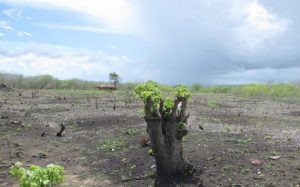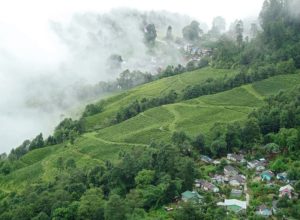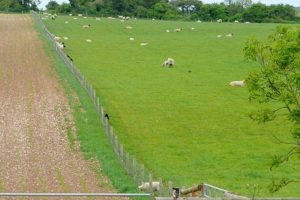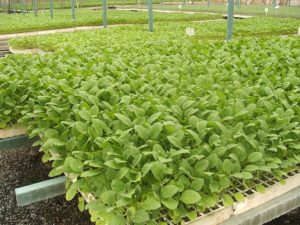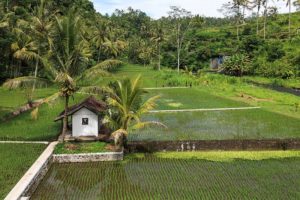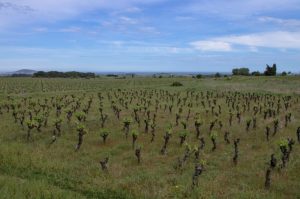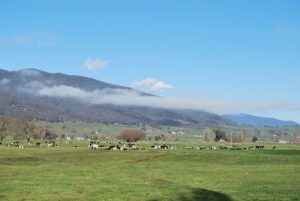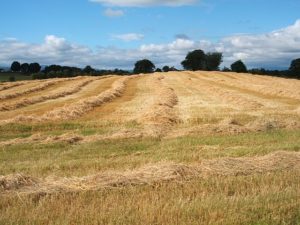Agriculture, the cornerstone of human civilization, manifests in a rich tapestry of different types of agricultural activity. It represents our ceaseless efforts to harness the land and its resources to nourish our communities and economies. These agricultural activities encompass a spectrum of practices, from the cultivation of crops that blanket the fields to the nurturing of livestock that roam our pastures. Yet, agriculture also extends into the realms of agroforestry, where trees and crops coexist, and aquaculture, where aquatic life is sustainably managed. Each of these approaches brings its unique set of challenges and opportunities, all converging towards the shared goal of providing sustenance for a growing global population. In this exploration, we’ll journey through these diverse agricultural landscapes, understanding the practices that define them, their ecological significance, and the role they play in addressing the complex challenges of food security and sustainability in our modern world.
Summary
- Agriculture involves the rearing of animals and crop cultivation
- Agriculture aims at providing enough, healthy food to feed the population worldwide
- Different types of agricultural activities are practiced in different regions across the world
- Factors such as climate affect the type of agricultural activity a farmer can practice
- Types of agricultural activities include subsistence farming, nomadic herding, commercial plantation, livestock rearing, etc.
Agriculture involves plants and animals breeding and land cultivation to offer fiber, food and medicine. It also provides other products necessary for life enhancement and sustenance. During the sedentary human civilization, agriculture was a critical aspect of development. Domesticated plant and animal species were farmed for food surpluses to sustain people living in cities.
Agricultural science is the study of agriculture, a field whose history dates back thousands of years. People began planting grains about 11,500 years ago prior to their domestication. On the other hand, wild grains were gathered over 105,000 years ago. However, sheep, pigs and cattle were first domesticated more than 10,000 years ago.
Crops have their origin in about 11 regions across the world. Within the previous century, large-scale monoculture has driven the growth of industrial agriculture and thus its domination of agricultural output. However, more than 2 billion people worldwide rely on subsistence agriculture for sustenance.
Technological developments, plant breeding, modern agronomy and agrochemicals such as fertilizers and pesticides have spurred agricultural output. However, they’ve also led to widespread environmental and ecological damage.
Similarly, animal husbandry practices and selective breeding have increased meat output. On the converse, concerns are rising regarding environmental damage and animal welfare. They’ve led to deforestation, global warming, hormonal growth in meat produced industrially, aquifer depletion and resistance to antibiotics. Although genetically modified organisms (GMOs) are banned in many countries, their use is widespread.
Fuels, foods, raw materials such as rubber and fibers are the major groups of agricultural products. Food classes comprise of vegetables, oils, fungi, grains or cereals, fruits, eggs, meat and milk. The agricultural field employs more than a third of the total number of workers worldwide after the service industry. However, the number of workers in the agricultural sector of developed nations has reduced over the last centuries.
Top 13 Types of Agriculture
Although agriculture is not uniform across the world, it is the most widespread activity. It is classified based on the type of crop being grown, scale of cultivation, intensity, mechanization level, combinations of livestock and how farm produce is distributed. The following are the different types of agricultural activities worldwide:
1. Shifting Cultivation
Shifting cultivation is commonly practised in the tropics. It involves forest clearance through burning and slashing. The cleared land is cultivated until its fertility declines, or for three to five years or until native flora and weeds overtake it. When that happens, farmers abandon the land for a fallow period and clear another forest area for cultivation.
It is a type of subsistence farming usually done manually. People in tropical regions such as south-east Asia tend to adopt this type of agricultural activity with a focus on growing grains. However, due to the pressure environmentalists and activists exert to support environmental protection from such unsustainable practices, the activity is declining.
2. Nomadic Herding
Nomadic herding is the practice of keeping and grazing animals on natural pastures. It is common in the arid and semi-arid regions such as certain parts of Saudi Arabia, northern Africa and northern parts of Eurasia. The practice resembles pastoral farming.
Nomads move with their animals from one place to another in search of water and pasture for their animals. The type of animals herded vary from one region to another. They include sheep, cattle, camel, goats, donkeys and horses. The activity is a form of subsistence farming meant to feed the family.
3. Rudimentary Sedentary Tillage
Unlike other types of agricultural activities, rudimentary sedentary cultivation is a type of subsistence farming practised on the same piece of land year-in, year-out. The land is then left fallow after some years to regain its soil fertility. It is commonly practiced in the tropics and involves the growth of tree crops such as the Para rubber tree and grains.
4. Livestock Ranching/Pastoral Farming
Livestock ranching focuses on rearing animals. Unlike nomadic herding, farmers do not move from one place to another in search of pasture and water, but live in settlements. Pasture lands are developed for grazing the animals. Many areas across the globe with large pieces of land with enough grazing areas for animals practice this type of agriculture for commercial reasons.
South America, North America and Australia are some regions across the world that intensively practice commercial pastoral farming on large-scale due to low rains received in the areas. The animals in ranches are mainly kept for wool and meat. Dairy farming is also a critical aspect of pastoral farming.
However, the activity is not sustainable because excessive grazing can lead to the destruction of natural pastures. Therefore, farmers end up buying feeds for their animals, making the practice costly.
5. Commercial Plantations
Also known as tree crop farming, industrialized agriculture or plantation farming, commercial plantations cover large land areas. Even if practised on a smaller piece of land, the activity has a high commercial value. It involves the cultivation of tropical crops such as tea, rubber, coffee, coconut, cocoa, grapes, apples, spices, oranges, avocado, mangoes and palm oil.
It is commonly practiced in regions with European colonial influence such as Africa, Asia and Latin America. Colonial governments established most of the plantations in their colonies to supply the European markets with tropical crops. It requires high capital to establish with the majority of the crops grown being tree crops.
Some plantation farms have processing factories. Various farming techniques are adopted to increase farm yield because the goal of such farms is to make profits.
6. Mixed Farming
Also known as grain and livestock farming, mixed farming involves the growing of crops and rearing of animals. It has its origins in the humid, mid-latitudes, excluding Asia. It is an agricultural activity with its roots mainly in Europe. Mixed farming develops in close relation to market infrastructure. It is commonly practised in New Zealand and Great Britain.
Mixed farming involves continuous cropping and the growth of crops with varying maturity periods on the same piece of land. It does well in areas with sufficient rainfall or proper facilities for irrigation.
7. Specialized Horticulture
Increased demand for horticultural products in highly urbanized areas with dense populations led to the development of specialized horticulture. It has been successfully adopted in northern Hungary, France and the Swiss Lake regions for vineyard cultivation.
8. Subsistence Farming
Subsistence farming involves growing crops and keeping animals for the sole purpose of feeding the farmer and his family. It involves the use of simple farm tools on small pieces of land. Most subsistence farmers are believed to be poor and thus cannot afford to buy improved seeds and fertilizers. Therefore, they farm on land with low soil fertility or rough terrains.
Subsistence farming has low productivity and does not involve the use of irrigation systems or electricity, facilities often unavailable to such farmers. Since the food grown is often consumed by the farmer and his household, almost none is sold for an extra coin.
Agricultural activity is rampant in mid-latitude areas, but has been declining over the years due to Russian farming collectivization; the activity was majorly practiced in Russia.
9. Intensive Subsistence Farming with/without Rice as a Dominant Crop
Farming with Rice as a Dominant Crop
Tropical regions with dense populations and high rainfall are the areas where intensive subsistence farming is practised. Rice is the major crop grown because it can feed and employ many people in every unit area. It is mainly adopted in south-east Asia and farmers make use of animal and manual power to carry out farming activities. Most farmers use manures to improve the productivity of their farms per unit area.
Farming without Rice as a Dominant Crop
Just like subsistence farming with rice as the main crop, this activity is practiced in areas with low rainfall. Apart from rice, farmers grow other grain crops such as millet and wheat. The agricultural activity is practiced in Central America and southern Africa and areas in northern Africa, Asia and the Middle East without much rainfall throughout the year.
10. Mediterranean Agriculture
Mediterranean agriculture involves the rearing of animals and growing of crops in the rugged, Mediterranean terrain. Small animals and crops such as citrus fruits, vineyards and wheat are the crops mainly grown in the region. Horticulture is also practiced with the majority of crops sown in winter due to winter rains.
11. Dairy Farming
Dairy farming involves the rearing of cattle for milk. With its origins in Europe, the activity is highly developed in Sweden and Denmark. However, it has spread to other parts of the world and is practised in areas near markets. It thrives in regions that enjoy a temperate climate.
12. Commercial Grain Farming
Commercial grain farming resulted from the mechanization of farms. It is mainly practiced in areas with less dense population and low rainfall. The grains grown in these areas are drought and weather hardy and thus can survive in dry conditions. Mainly adopted in steppes, prairies and the temperate grasslands of Australia and South America, the activity mainly involves wheat monoculture.
13. Arable Farming
Arable farming, unlike pastoral or mixed farming, involves the growing of crops without keeping animals. It can be practised on a large, commercial or small scale. Annual crops such as plantains, vegetables, grains, cassava, potatoes and legumes are often grown in arable farms.
Although existing types of agricultural activities have been classified based on the elaborate Whittlesey’s agricultural technique of classification, it is not permanent. Agricultural pattern worldwide has changed and continues to change due to increased development in agricultural technology and the ever-changing market demands since Whittlesey carried out her study.
Increased demand for fruits and vegetables worldwide as populations adopt healthy lifestyles have led to the modification of how land is used across the globe. With such factors, agricultural activities increasingly become dynamic.
Frequently Asked Questions About Different Types of Agricultural Activity
What are the various types of agricultural activities, including crop cultivation, animal husbandry, agroforestry, and aquaculture, and how do they contribute to food production and rural economies?
Agricultural activities encompass diverse practices, from growing crops and raising livestock to managing forests and cultivating aquatic species, supporting food supply and livelihoods.
Explain the principles and practices of agroforestry, which combines tree cultivation with crop or livestock farming, and its benefits for soil fertility, biodiversity, and climate resilience.
Agroforestry integrates trees into farming systems, improving soil health, providing habitat, and enhancing resilience to climate change.
Describe the techniques and challenges associated with aquaculture, the farming of aquatic organisms, and its role in meeting global demand for seafood.
Aquaculture involves raising fish, shrimp, and other aquatic species, facing challenges related to water quality, disease management, and sustainability.
Discuss the role of precision agriculture, which uses technology and data to optimize farming practices, in enhancing crop yields, resource efficiency, and environmental stewardship.
Precision agriculture employs sensors, GPS, and data analysis to improve crop management, conserve resources, and reduce environmental impacts.
How do urban farming and community gardening contribute to local food production, food security, and community well-being, and what are the considerations for promoting urban agriculture?
Urban farming and community gardens provide fresh produce, foster community engagement, and address food access issues, requiring support for land access and infrastructure.
References:
- Denham, T. P. (2003). “Origins of Agriculture at Kuk Swamp in the Highlands of New Guinea”. Science. 301 (5630): 189–193. doi:10.1126/science.1085255. PMID 12817084.
- Harmon, Katherine (17 December 2009). “Humans feasting on grains for at least 100,000 years”. Scientific American. Archived from the original on 17 September 2016. Retrieved 28 August 2016.
- ong, Y.; When, Z.; Innes, J. B.; Chen, C.; Wang, Z.; Wang, H. (2007). “Fire and flood management of coastal swamp enabled first rice paddy cultivation in east China”. Nature. 449 (7161): 459–462. Bibcode:2007Natur.449..459Z. doi:10.1038/nature06135. PMID 17898767.
- Singh, J., & Dhillon, S. S. (2004). Agricultural geography. New Delhi: Tata McGraw-Hill.
- Singh, J., & Dhillon, S. S. (2004). Agricultural geography. New Delhi: Tata McGraw-Hill.
- Grigg, D. B. (1974). The agricultural systems of the world: An evolutionary approach. London: Cambridge University Press.
- Hattersley, L., & Hattersley, L. (2002). Revise for geography GCSE OCR specification C (Bristol Project). Oxford: Heinemann.
IMAGE SOURCES:
- Shifting Cultivation – Ton Rulkens from Mozambique, Shifting cultivation (11012075146), CC BY-SA 2.0
- Nomadic Herding – abhiriksh, Dhangar people in Chinawal 6, CC BY-SA 3.0
- Livestock Ranching – USDA NRCS, Livestock NR 138 (38159848744), marked as public domain, more details on Wikimedia Commons
- Commercial Tea Plantation – Joydeep, Tea plantation Darjeeling, CC BY-SA 3.0
- Mixed Farming – Graham Horn, Mixed farming at Lychpole Farm – geograph.org.uk – 1327790, CC BY-SA 2.0
- Specialized Horticulture – Luispihormiguero, Semillero6, marked as public domain, more details on Wikimedia Commons
- Subsistence Farming – Likezzo, Subsistence Farming in Zambia, CC BY-SA 4.0
- Subsistence Rice Farming – Photo by CEphoto, Uwe Aranas or alternatively © CEphoto, Uwe Aranas, Muncan Bali Indonesia Rice-paddy-along-Jalan-Raya-Muncan-01, CC BY-SA 3.0
- Mediterranean Vineyard Agriculture – Christian Ferrer, Vineyard, Pinet, Hérault 08, CC BY-SA 3.0
- Dairy Farming – Mattinbgn, DairyFarmNearIndiBridge, CC BY-SA 3.0
- Commercial Grain Farming – Max Torben Heinrich, Hay (164308243), CC BY 3.0
- Arable Farming – Norma Foggo, Arable farming – geograph.org.uk – 38479, CC BY-SA 2.0






